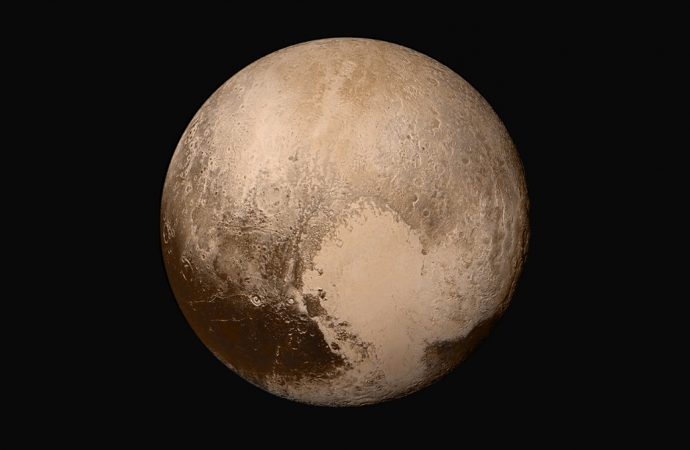Space physicists say that they now have a treasure trove of information about how Pluto’s atmosphere interacts with the solar wind.
Pluto behaves less like a comet than expected and somewhat more like a planet like Mars or Venus in the way it interacts with the solar wind, a continuous stream of charged particles from the sun.
This is according to the first analysis of Pluto’s interaction with the solar wind, funded by NASA’s New Horizons mission and published today in the Journal of Geophysical Research – Space Physics by the American Geophysical Union (AGU).
Using data from the Solar Wind Around Pluto (SWAP) instrument from the New Horizons July 2015 flyby, scientists have for the first time observed the material coming off of Pluto’s atmosphere and studied how it interacts with the solar wind, leading to yet another “Pluto surprise.”
“This is a type of interaction we’ve never seen before anywhere in our solar system,” said David J. McComas, lead author of the study. McComas, professor of astrophysical sciences at Princeton University and vice president for the Princeton Plasma Physics Laboratory. “The results are astonishing.” McComas leads the SWAP instrument aboard New Horizons; he also led the development of SWAP when he was at the Southwest Research Institute (SwRI) in San Antonio, Texas.
Space physicists say that they now have a treasure trove of information about how Pluto’s atmosphere interacts with the solar wind. Solar wind is the plasma that spews from the sun into the solar system at a supersonic 100 million miles per hour (160 million kilometers per hour), bathing planets, asteroids, comets and interplanetary space in a soup of mostly protons and electrons.
Previously, most researchers thought that Pluto was characterized more like a comet, which has a large region of gentle slowing of the solar wind, as opposed to the abrupt diversion solar wind encounters at a planet like Mars or Venus. Instead, like a car that’s part gas- and part battery-powered, Pluto is a hybrid, researchers say.
So Pluto continues to confound. “These results speak to the power of exploration. Once again we’ve gone to a new kind of place and found ourselves discovering entirely new kinds of expressions in nature,” said SwRI’s Alan Stern, New Horizons principal investigator.
Since it’s so far from the sun – an average of about 3.7 billion miles, the farthest planet in the solar system – and because it’s the smallest, scientists thought Pluto’s gravity would not be strong enough to hold heavy ions in its extended atmosphere. But, “Pluto’s gravity clearly is enough to keep material relatively confined,” McComas said.
The researchers were able to separate the heavy ions of methane, the main gas escaping from Pluto’s atmosphere, from the light ions of hydrogen that come from the sun using the SWAP instrument.
Among additional Pluto findings:
- Like Earth, Pluto has a long ion tail, that extends downwind at least a distance of about 100 Pluto radii (73,800 miles/118,700 kilometers, almost three times the circumference of Earth), loaded with heavy ions from the atmosphere and with “considerable structure.”
- Pluto’s obstruction of the solar wind upwind of the planet is smaller than had been thought. The solar wind isn’t blocked until about the distance of a couple planetary radii (1,844 miles/3,000 kilometers, about the distance between Chicago and Los Angeles.)
- Pluto has a very thin boundary of Pluto’s tail of heavy ions and the sheath of the shocked solar wind that presents an obstacle to its flow.
Heather Elliott, astrophysicist at SwRI and co-author on the paper, notes, “Comparing the solar wind-Pluto interaction to the solar wind-interaction for other planets and bodies is interesting because the physical conditions are different for each, and the dominant physical processes depend on those conditions.”
These findings offer clues to the magnetized plasmas that one might find around other stars, said McComas. “The range of interaction with the solar wind is quite diverse, and this gives some comparison to help us better understand the connections in our solar system and beyond.”
SOURCE: NASA
PHOTO: NASA

































Leave a Comment
You must be logged in to post a comment.